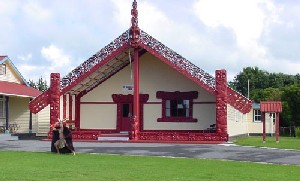SCANZ 2013: The substance of experience
Authors: Kura Puke and Stuart Foster
Abstract
Within the Turkish landscape, the elevated minarets or ‘light houses’ provide a visual focal point and a spatial trajectory through aural extensions created by the cyclical call of the adhan. A revered kaumatua, who attended ISEA2011 in Istanbul, spoke of his experience of this ancient and entrenched practice as “stirring” and “touching the soul”
This effect may be similar to the customary Maori call ‘karanga’ with its two-fold function; to communicate audibly across a physical distance, and, a spiritual call that engages the wairua . For the participants, this call may ignite ‘te puna roimata’ or ‘the wellspring of tears’ as this aural invocation petitions, beyond time and space, to the ancestors and ultimately to the source of life itself.
These allegories to the metaphysical, may be best communicated in visual-aural modes, where content is transmitted through media interconnectivity and received through wide ranging perceptions and understandings. In prompting metaphysical notions or discourse, these visuals participate in envisioning change.
The collaborative project titled ‘Tipi Rangi: Traversing the heavens’ is a sound-carrying laser light, where the relay of beams transport ancient vocal expression and audible environmental sounds, in a visual trajectory through the landscape.
Creative crossovers in science, technology, art and indigenous worldviews create new knowledge, towards integrated understandings of our contemporary ecological situation. These insights are crucial to cultivating meaningful, sustainable environmental wellbeing.
This project explores the potential toward deeper understanding of matter through electronics, forging dynamic relationships and producing captivating images, audio and performative expression. These motivations set the stage for transdisciplinary learning and communication to take place.
In the research of light, sound and other energies, exploration and discovery through technology allows the invisible to be made visible and the intangible, tangible. These are the realms of science and art, understandings of measuring and expressing narratives of these energies. Maori knowledge or matauranga has identified, interlinked and organized these phenomena within a complex but inclusive genealogical framework. The implication is, that every individual is connected to each other, to all things, and to nature itself, therefore the environment must be treated accordingly.
Notions of the metaphysical are fundamental to an indigenous view, and increasingly re-occurring in a western view, as scientific information cannot deliver these understandings but a convergence offers new knowledge pathways.
The continuation of karanga as a post colonial re-balancing of cultural identity for the collective and specifically women is a critical element in the dynamic contribution to matauranga Maori. In an increasingly younger, indigenous demographic, creating relevant meaningful visual culture is an imperative. Karanga sent forth through light, transmitting the voice as vibration can assert cultural value, identity and technology. The outcomes may be useful to those communities as inclusive learning opportunities and a tool for expressing mana
In the emerging global culture, creative products can travel, further innovating and creating new knowledge formed through both the weight of scientific data and the substance of experience.







